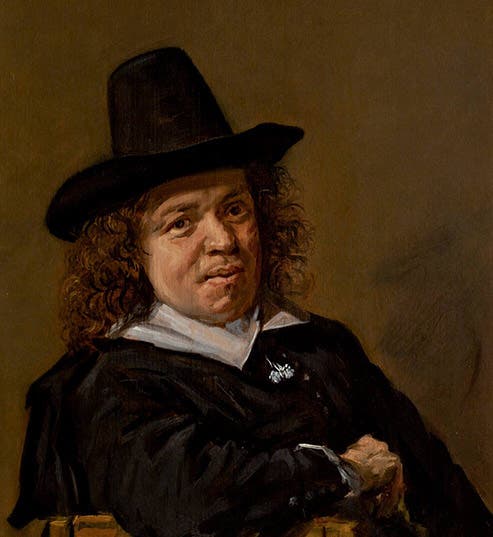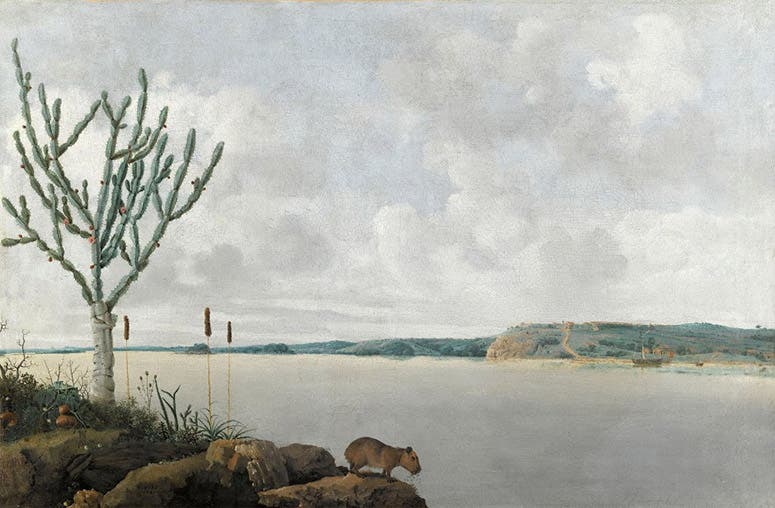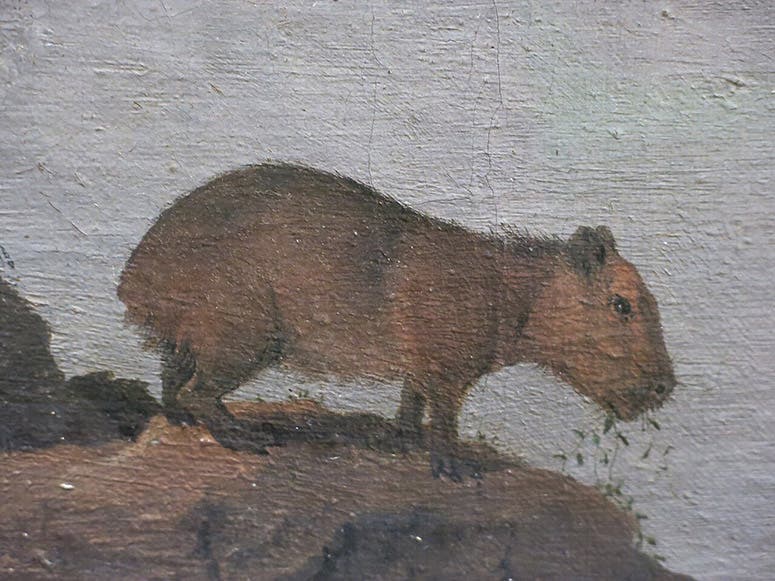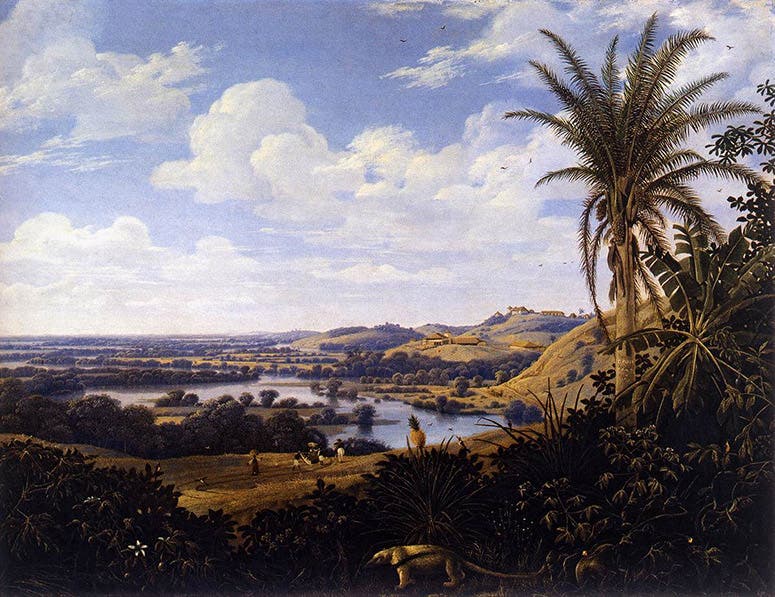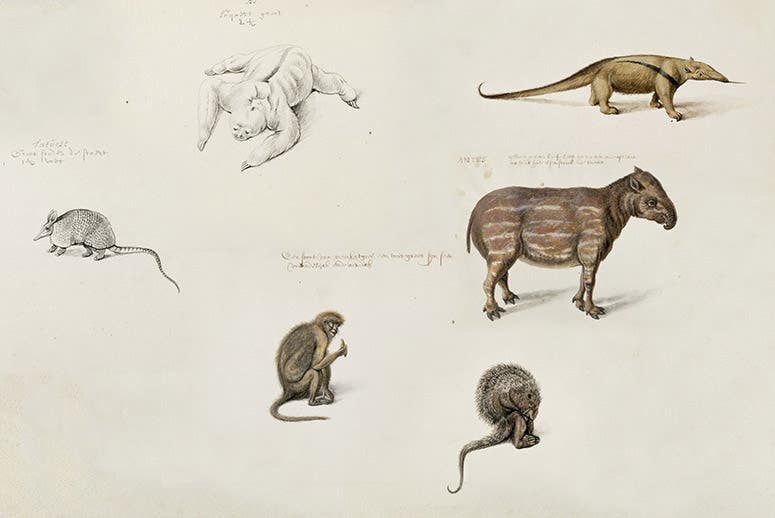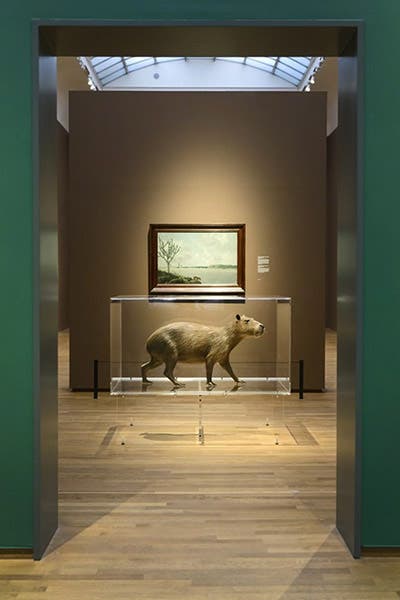Scientist of the Day - Frans Post
Frans Post, a Dutch landscape painter, was born Nov. 17, 1612, in Haarlem. His father was a glass painter, and his older brother would become a respected architect. We don't know where Frans studied painting. Haarlem was the home of Frans Hals, some 30 years older than Post, and Hals painted Post's portrait in 1655, when Post was 43 (and Hals was 73; first image), so perhaps there was some artistic interaction earlier between the two. But probably not – they were stylistically worlds apart.
In 1637, Post was one of two painters selected by Johan Maurits of Nassau to accompany him to Brazil, where the Dutch were establishing a colony based on cane-sugar production (the other was Albert Eckhout). Maurits also took along 2 naturalists, to study the plants and animals of Brazil; Georg Markgraf (sometimes Marcgrave) was the zoologist, and Willem Pies (Piso) the botanist. They spent seven years there, and a principal result was the Historia naturalis Brasiliae (Natural History of Brazil), published in 1648 by Piso, after Markgraf’s death on the way home. We have written posts on Maurits, Markgraf, and Piso. But we have never discussed either artist, except in passing.
We don’t know what Post's official duties were for Maurits. We guess that he made military drawings of forts and settlements, and perhaps some maps. We guess this because, if his duties involved making landscape paintings, he would have been fired for lack of production. When he got back to the Netherlands in 1644, he brought with him only 6 landscapes, not much to show for 7 years. But they are the first European landscapes of Brazil, and they are meticulously done, with animals and plants depicted with great accuracy. The most famous (second image) is one that shows the Rio São Francisco, with Fort Maurits on the far shore, and one lone capybara munching on some water plants on the riverbank. The detail of the capybara (third image) shows the attention to detail characteristic of Post. This painting is now in the Louvre, the gift of a much older Johann Maurits to King Louis XIV in 1679, along with most of the other Brazilian paintings by Post.
But Post must have brought home a portfolio of sketches of Brazil, for he continued to paint Brazilian landscapes for the next 25 years. In fact, that is all he painted. Our fourth image shows a 1649 landscape with an anteater in the foreground. But no notebooks or sketchbooks of his have ever turned up, with one exception. There are multiple notebooks of sketches of animals, now in Poland, that were either used for the woodcuts in the Historia naturalis Brasíliae, or, more likely, were copied from them. But none of these have been attributed to Post. However, not long ago, a small collection of 34 watercolors and graphite drawings of animals were found in a Dutch archive that scholars agree were drawn by Post, and that is exciting, because it suggests that Post may have done the preliminary drawings that were used to illustrate the Historia. The only published drawings from this archive that I have seen (fifth image) are from an exhibition at the National Gallery of Ireland in 2018, and there is no doubt that the drawing of the sloth on the ground was the one used in the second edition of the Historia (1658). No one would be surprised if it turned out that Post was responsible for all the animal illustrations in the Historia.
Six weeks ago, I wrote a post on Joan Blaeu, in which I showed maps of several prefectures of Brazil from Blaeu’s Atlas maior (1662). One of those showed, in an unmapped interior space, three Brazilian animals: a jaguar, a capybara, and a tapir. I have since discovered that Blaeu took this scene from a wall map of Brazil, drawn by Markgraf and published by Blaeu in 1647. And that map was illustrated by Post, including the three Brazilian animals, further evidence that Post might have been the artist for Markgraf's part of the Historia.
In 2017, the Rijksmuseum in Amsterdam did an exhibition on Post, for which they borrowed the Louvre landscapes and also some mounted specimens of Brazilian animals, and then showed the two together, so that a real capybara mount stood in front of the capybara landscape (last image). That must have been an interesting exhibition, if you like standing next to a stuffed specimen of the world’s largest rodent.
William B. Ashworth, Jr., Consultant for the History of Science, Linda Hall Library and Associate Professor emeritus, Department of History, University of Missouri-Kansas City. Comments or corrections are welcome; please direct to ashworthw@umkc.edu.

